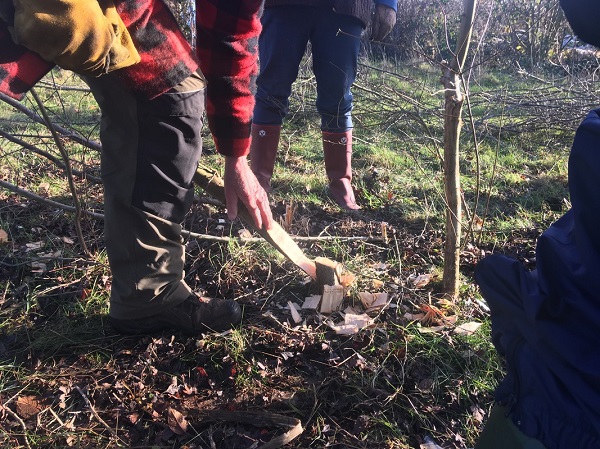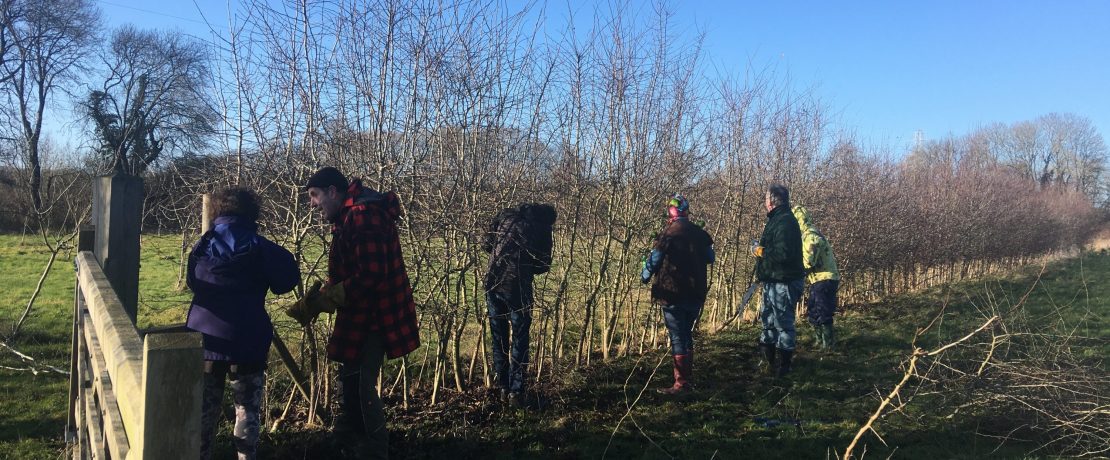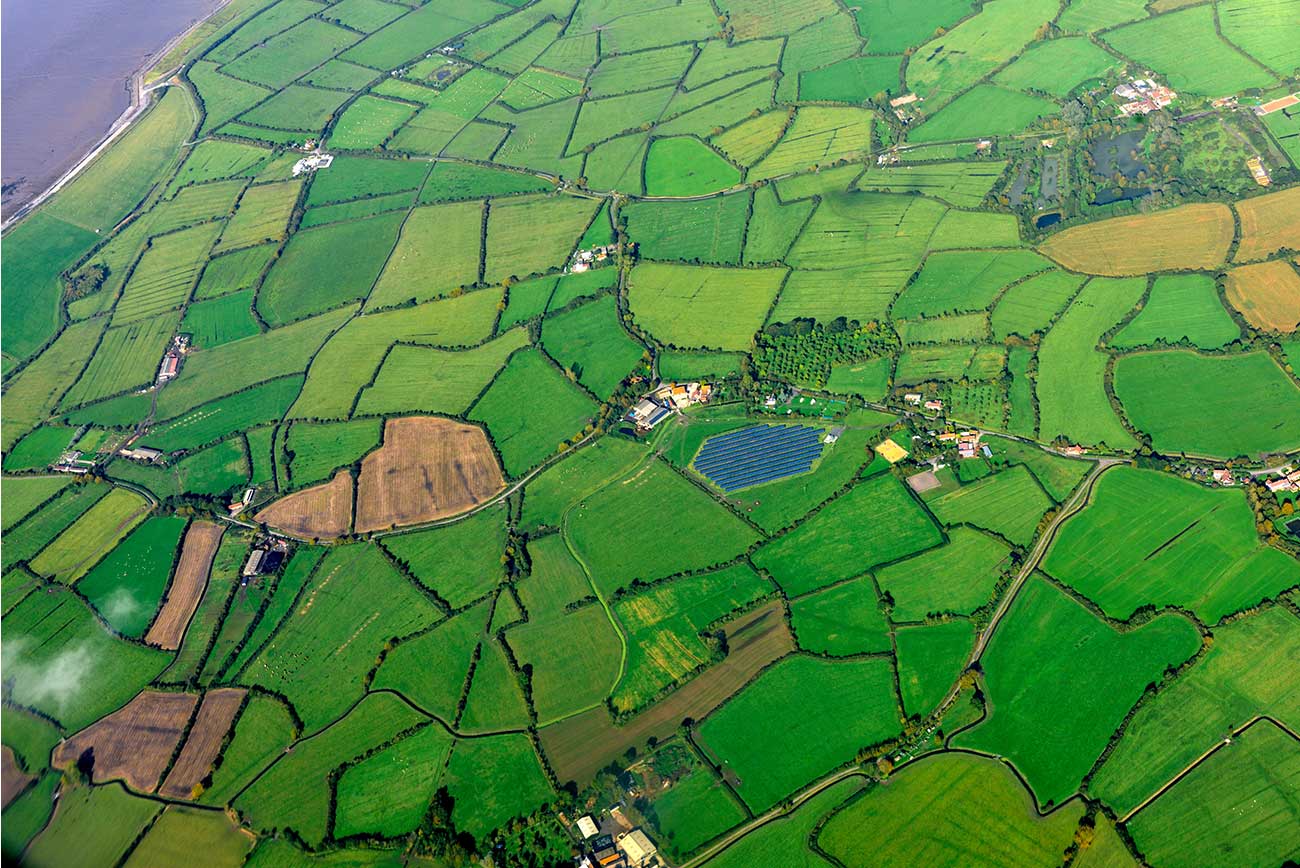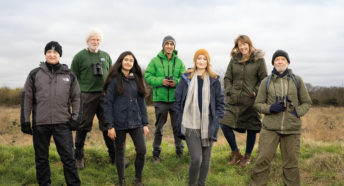Hedgelaying in the Oxford Green Belt
As part of our mission to enhance the countryside, CPRE is supporting a range of pilot community projects that are improving local green spaces across England. Our campaigns and policy assistant Eleanor Absalom went along to find out what was happening at Hogacre Common Ecopark in Oxfordshire.
Just a 20-minute walk from Oxford city centre lies Hogacre Common, a little slice of ‘countryside next door’ that is being revitalised by an inspiring community project. This Green Belt ‘ecopark’ was started in 2010 and now boasts a café that opens during the summer, newly planted woodland, allotments and a young orchard surrounded by an overgrown hedge – and it was this that our 12-strong volunteer group was going to be tackling.
Taking refuge from the wind and rain in the old pavilion, professional hedgelayer and our instructor for the day, Clive Leeke, began by informing us all about this ancient practice. Hedgelaying is a centuries-old skill developed to maintain the health and structure of hedgerows by promoting horizontal growth (hedges should be ‘laid’ every 10-15 years). With this long history comes a wealth of traditions that have shaped our landscapes and communities, from the myriad of regional hedge styles to the 30-odd different types of hedgelaying billhook (a special knife-like tool used for cutting thick stems).
Restoring habitats and heritage
However, post-war mechanisation and incentives for larger field sizes saw the removal of 7,250km of hedgerows from farmland in England each year between 1945 and 1970. Of the hedgerows that remain, almost half are classed as being in poor structural condition as their management has become a niche, dying craft. Re-planting efforts are now attempting to restore hedgerows but, so far, only a small proportion of the lost network has been replaced. When they play such a major role in connecting habitats, and form an iconic part of our landscape heritage, it is time we started to enhance our countryside with the humble hedgerow once more.
After morning coffee, the sun began to shine and we headed outdoors, armed with our tools and new knowledge. The hedgerow in question was about five years old (a good age to lay) and formed of two parallel lines of planted hedgerow trees; we would be laying it in two teams employing different regional styles. The Southern technique sees both sides of the hedge trimmed to remove outward growth (‘brush’) with only vertical stems retained, producing a very neat laid hedge. With the Midlands style, only one side is trimmed, leaving brush on the livestock side. This results in a slightly sturdier, although some might say scruffier, hedgerow – but we loved its rustic charm!

The art of the countryside
Once brush was removed, the main hedgerow tree stems could be split with a deep diagonal cut from a billhook, then laid gently down to create pleachers. Any long branches that were removed earlier were used as stakes, driven into the ground at regular intervals to help support the horizontal pleachers. This process was repeated on both lines of trees, weaving them across each other as they are laid until the hedge began to resemble a natural fence. Whips (long, thin, flexible branches) of the hedge’s birch or alder trees were then laid across the top, intertwined between the stakes to create a pleasant finish that helps hold the hedge together.
Hedgelaying is commonly referred to as an ‘art’ – but really its more of a sport! It was a tough, physical process, but everyone really seemed to enjoy themselves and the effort was welcome in the chilly winter weather – as was the hot soup and cake at lunchtime! While daunting at first, it wasn’t long before we simply couldn’t help spotting branches to be removed, gaps to filled and perfect whips to be woven. On the journey back, along windy country roads, we kept an eye out for the distinctive pleachers that indicate when a hedge has been laid. In most settings, this also indicates the hedge is likely to be over 50 years old.
It was great to think that our own handiwork might also be admired in decades to come, and CPRE is proud to be supporting such a fantastic community project. Hogacre hold regular volunteer days, so if you’re in the area and interested, do get in touch via hogacrecommon.org.uk.






 10 min read
10 min read 
